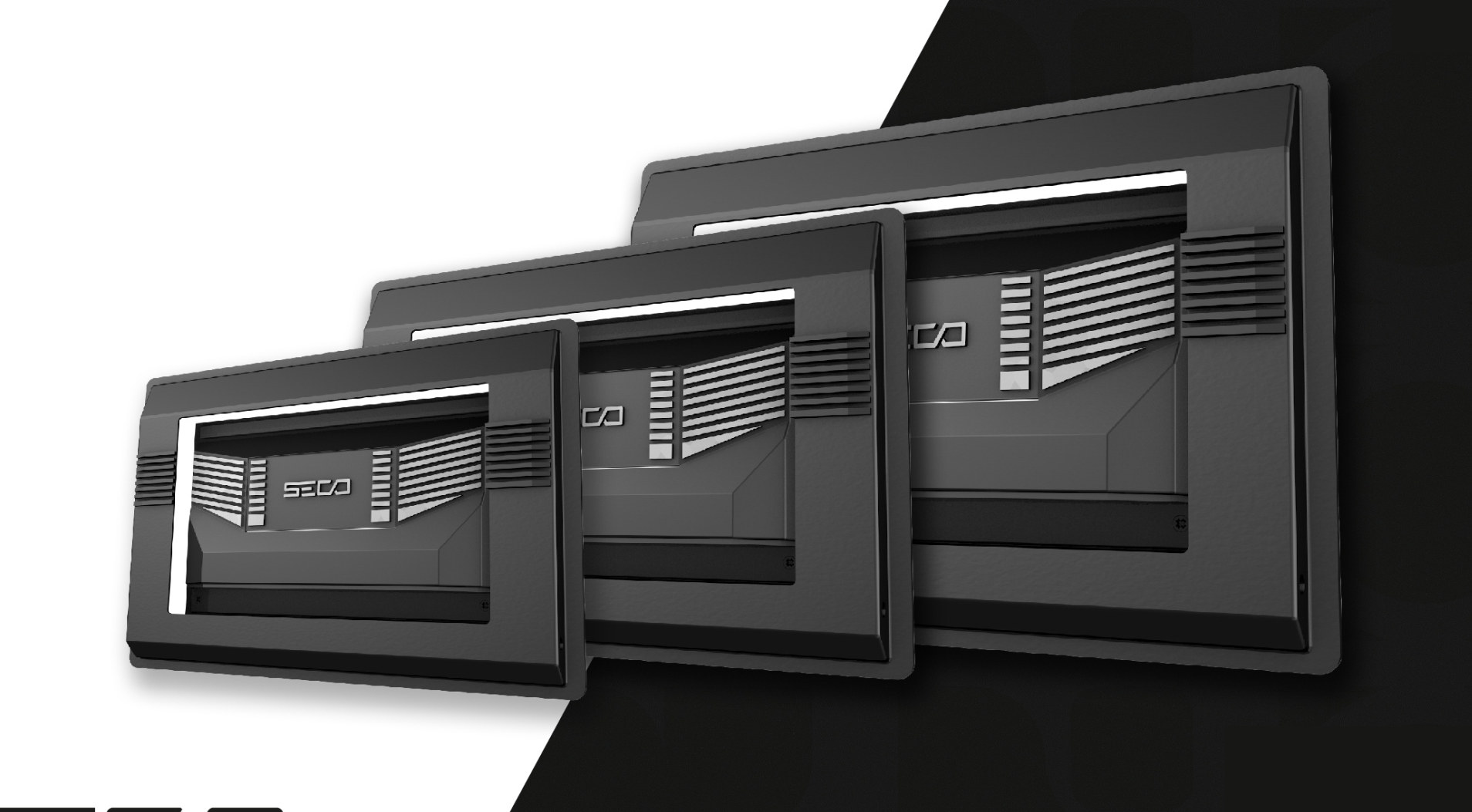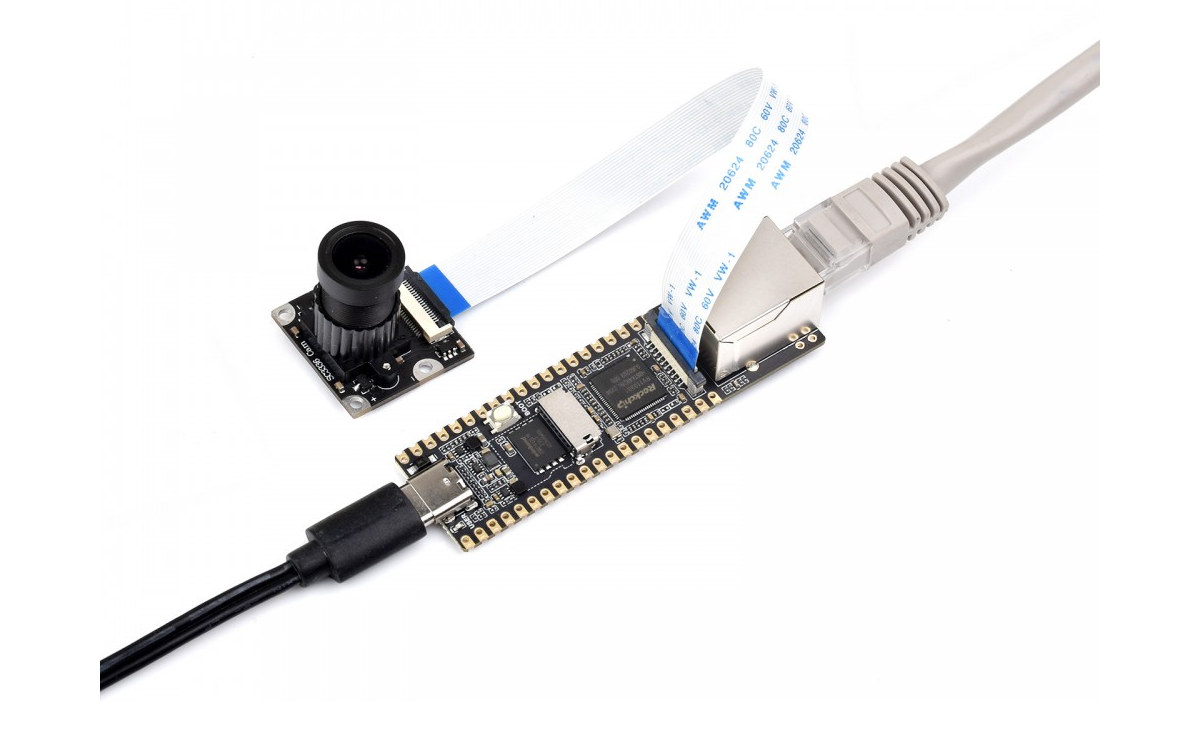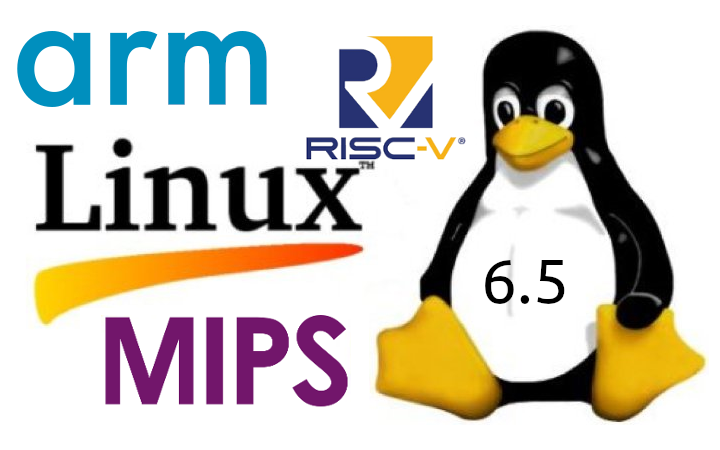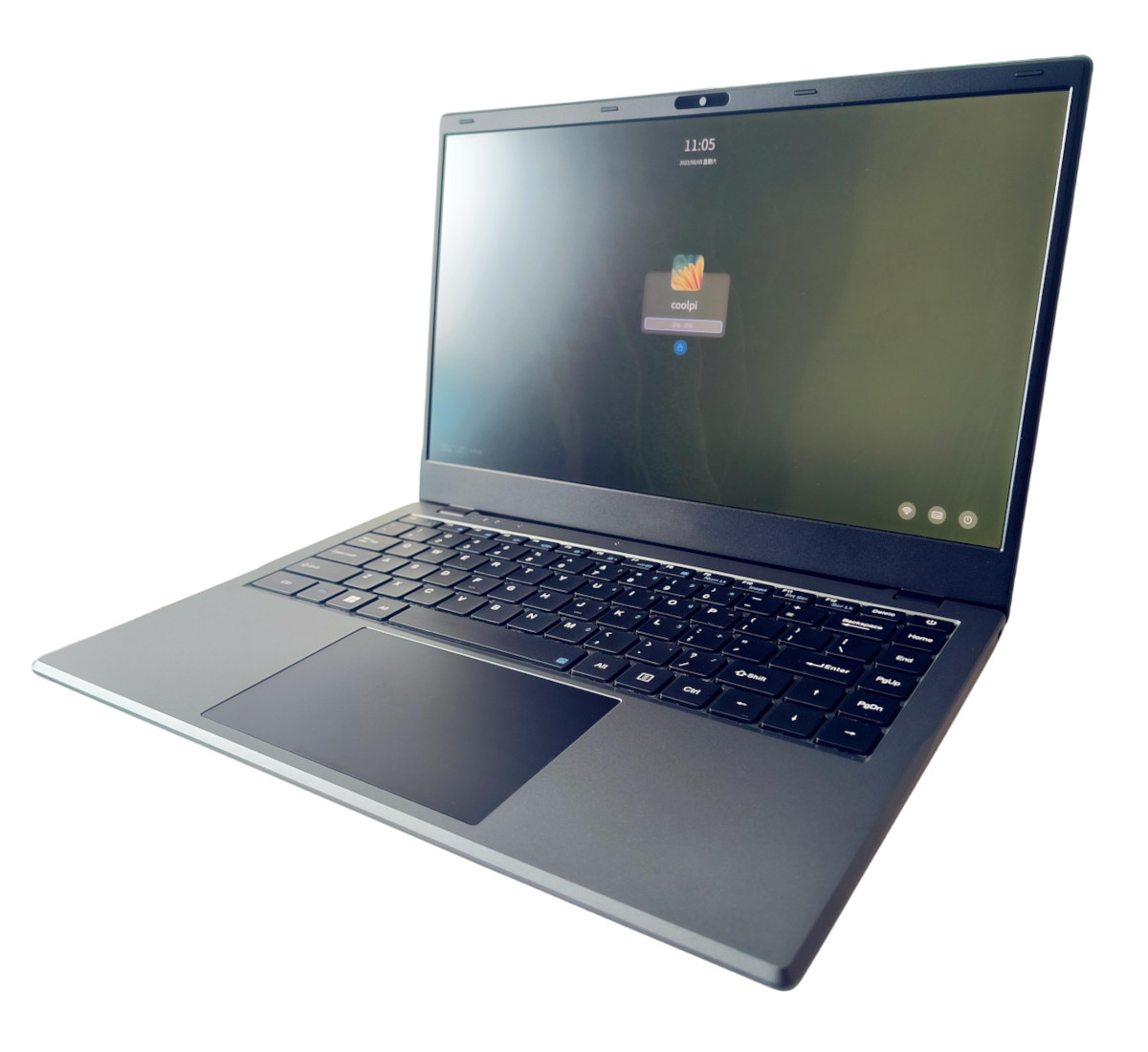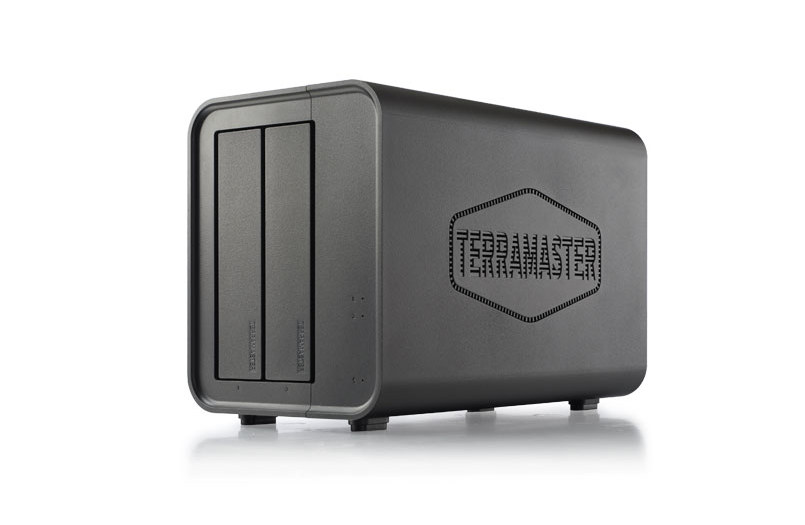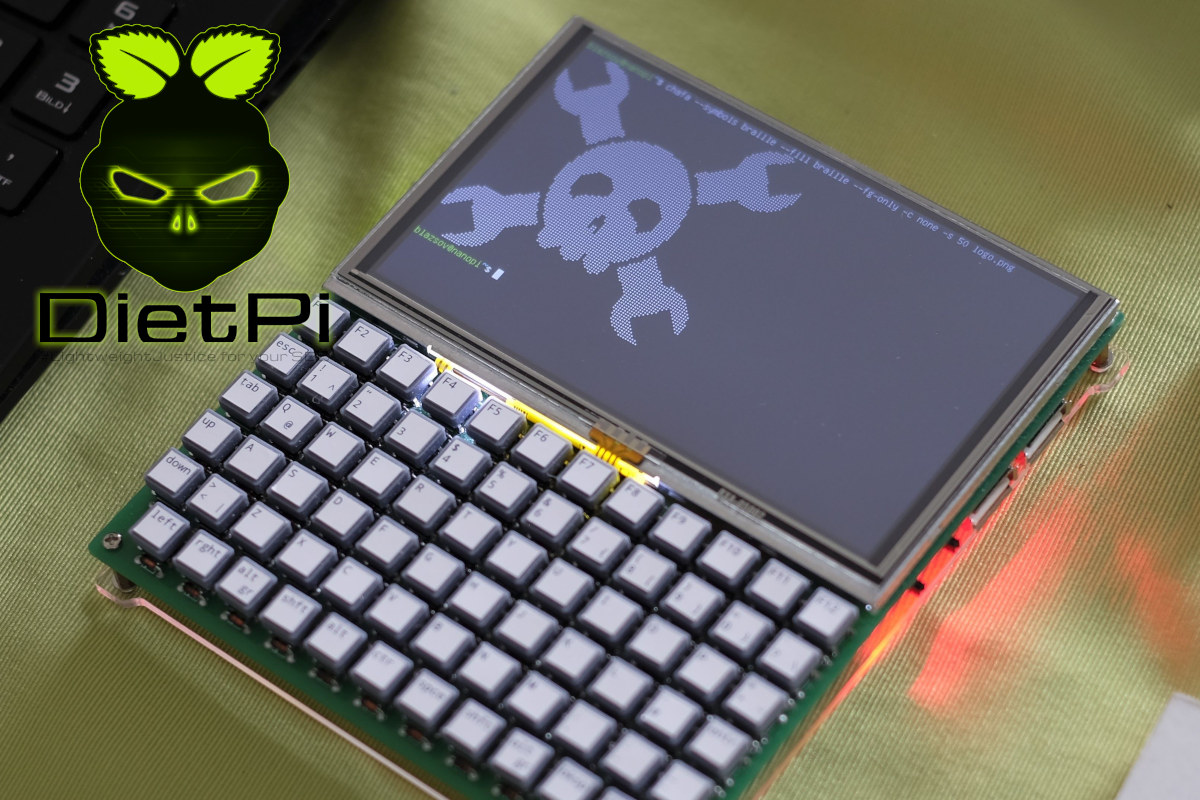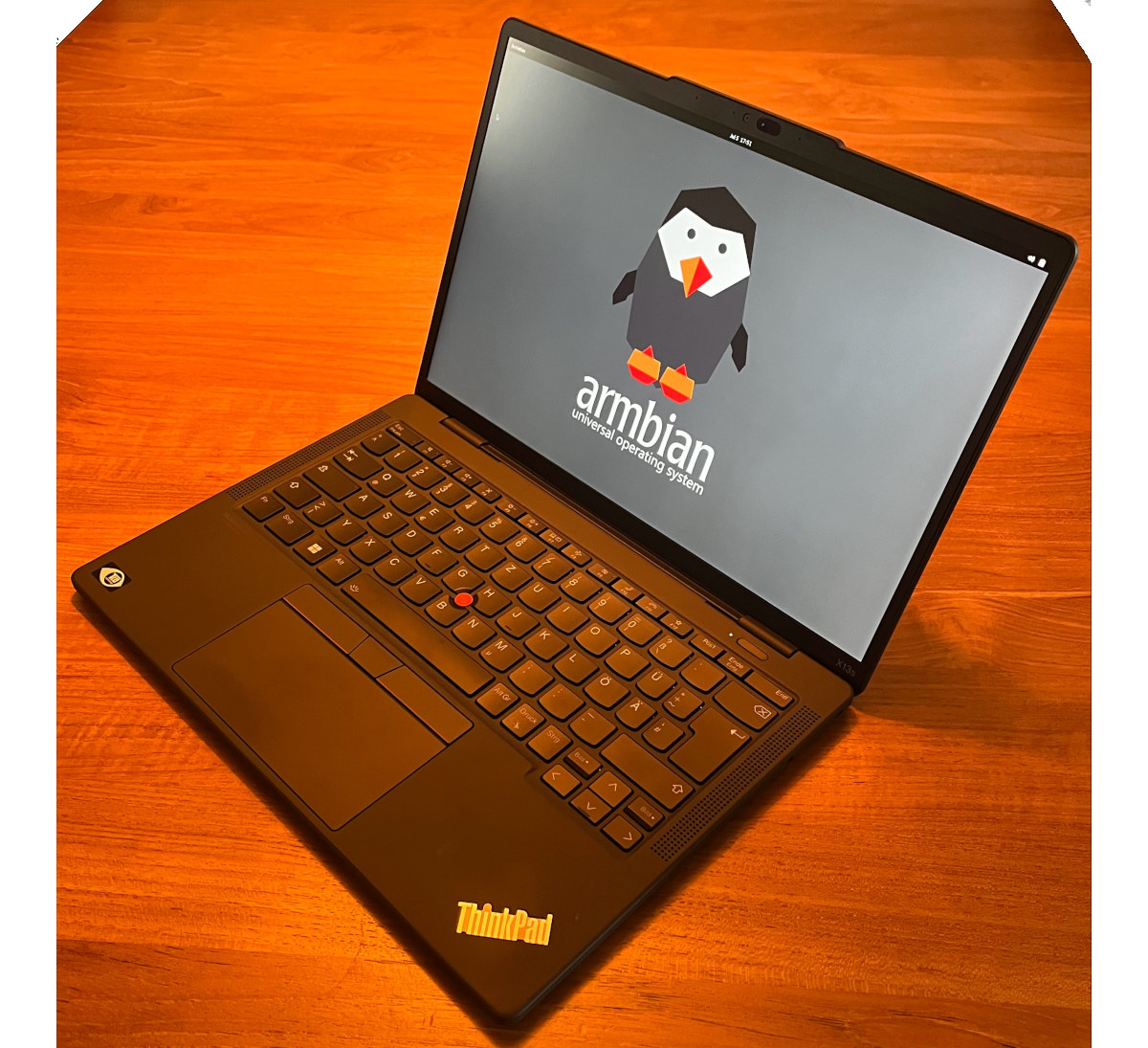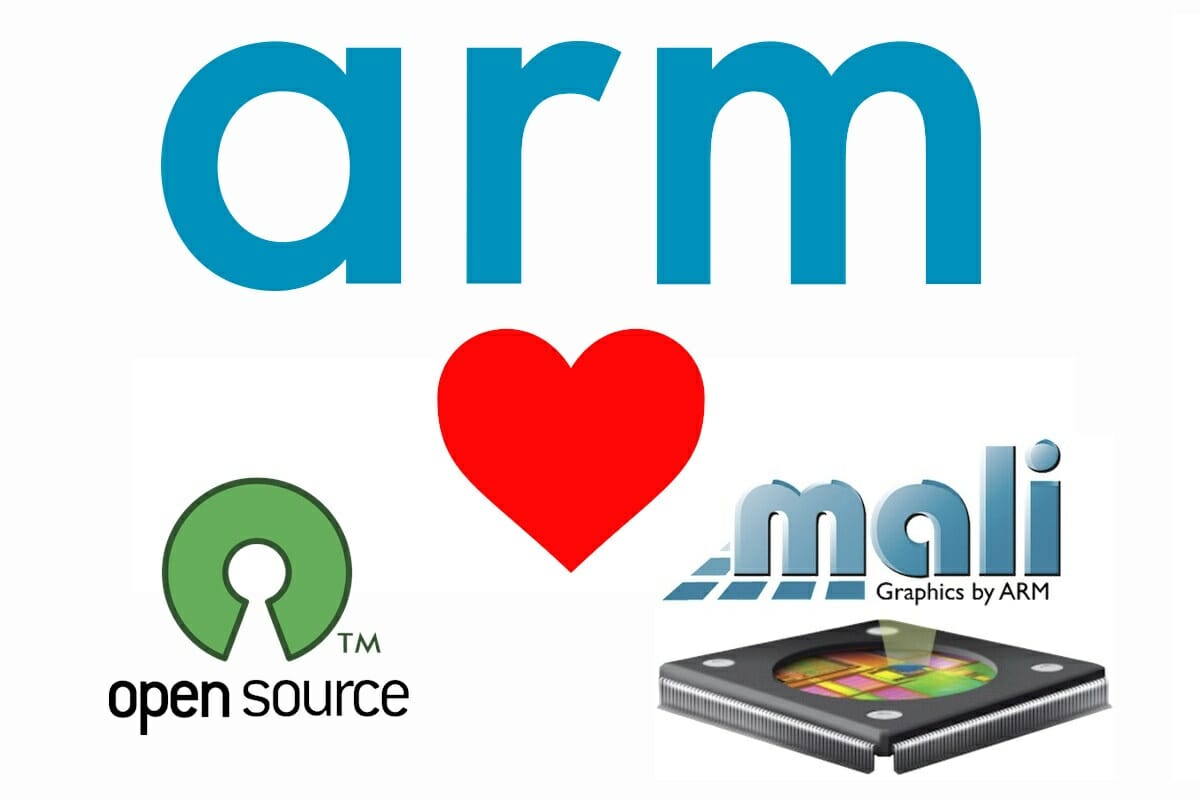SECO has unveiled a new HMI family of smart displays called the “Modular Vision” with NXP i.MX 93 (Arm), NXP i.MX 8M (Arm), or Intel Elkhart Lake (x86) powered SMARC 2.1-compliant system-on-modules and a display size ranging from 7-inch up to 15.6-inch. The goal is to offer a flexible platform to customers who can select various display sizes (7-inch, 10.1-inch, or 15.6-inch currently) and a SMARC module that closely matches the product’s requirements for example for a standalone panel PC. SECO Modular Vision key features and specifications: SoC 7-inch model – NXP i.MX93 single or dual-core Arm Cortex-A55 @ 1.7 GHz, Arm Cortex-M33 @ 250MHz, Arm Ethos U-65 microNPU 10.1-inch model – NXP i.MX 8M Plus dual or quad-core Arm Cortex-A53 @ 1.8 GHz, Arm Cortex-M7 @ 800MHz, optional GPU/VPU/2.3 TOPS NPU 15.6-inch model – Intel Atom x6000E, Pentium, and Celeron N and J Series “Elkhart Lake” CPUs with Intel […]
LuckFox Pico Rockchip RV1103 Cortex-A7/RISC-V camera board comes with an optional Ethernet port
LuckFox Pico is a small Linux camera board based on the Rockchip RV1103 Cortex-A7 and RISC-V AI camera SoC and offered with an Ethernet port in a longer version of the PCB called LuckFox Pico Plus. Both models come with 64MB RAM (apparently embedded in RV1103), a microSD card slot for storage, a MIPI CSI camera connector, a USB Type-C port for power, and a few through holes for expansion through GPIO, I2C, UART, and so on. LuckFox Pico and Pico Plus specifications: SoC – Rockchip RV1103 with Arm Cortex-A7 processor @ 1.2GHz, RISC-V core, 64MB DDR2, 0.8 TOPS NPU, 4M @ 30 fps ISP Storage MicroSD card slot LuckFox Plus only – 1Gbit (128MB) SPI flash (W25N01GV) Camera – 2-lane MIPI CSI connector Networking (LuckFox Pico Plus only) – 10/100M Ethernet RJ45 port USB – USB 2.0 Host/Device Type-C port Expansion – 2x 20-pin headers with up to 24x […]
Linux 6.5 release – Notable changes, Arm, RISC-V and MIPS architectures
Linus Torvalds has just announced the release of Linux 6.5 on the Linux Kernel Mailing List (LKML): So nothing particularly odd or scary happened this last week, so there is no excuse to delay the 6.5 release. I still have this nagging feeling that a lot of people are on vacation and that things have been quiet partly due to that. But this release has been going smoothly, so that’s probably just me being paranoid. The biggest patches this last week were literally just to our selftests. The shortlog below is obviously not the 6.5 release log, it’s purely just the last week since rc7. Anyway, this obviously means that the merge window for 6.6 starts tomorrow. I already have ~20 pull requests pending and ready to go, but before we start the next merge frenzy, please give this final release one last round of testing, ok? Linus The earlier […]
Cool Pi Arm Linux Laptop with Rockchip RK3588 SoM sells for $358 and up.
Cool Pi has put its CM5 Rockchip RK3588 system-on-module to good use by integrating it into a 14.1-inch laptop with 1920×1080 resolution running Android 12, Ubuntu 22.04, or other Linux distributions. The Cool Pi laptop comes with up to 32GB LPDDR4X memory, up to 256GB eMMC flash, features an M.2 socket for additional NVMe storage, as well as HDMI 2.1 video output and a USB-C port with DisplayPort Alt. mode to enable triple display setups with the laptop. Cool Pi laptop specifications: System-on-Module – Cool Pi CM5 SoC – Rockchip RK3588 octa-core processor with 4x Cortex‑A76 cores @ up to 2.2 GHz, 4x Cortex‑A55 core @ 1.8 GHz Arm Mali-G610 MP4 “Odin” GPU @ 1.0 GHz Video decoder – 8Kp60 H.265, VP9, AVS2, 8Kp30 H.264 AVC/MVC, 4Kp60 AV1, 1080p60 MPEG-2/-1, VC-1, VP8 Video encoder – 8Kp30 H.265/H.264 video encoder 6 TOPS NPU System Memory – 4GB, 8GB, 16GB, or […]
TerraMaster F2-212 is a 2-Bay NAS powered by Realtek RTD1619B Arm Cortex-A55 SoC
TerraMaster F2-212 is a 2-bay NAS powered by Realtek RTL1619B quad-core Cortex-A55 processor with support for support TRAID flexible disk array management tool, BTRFS file system, Snapshot, and TFSS disaster recovery tool. If you’ve never heard about TRAID (TerraMaster RAID) and TFSS (TerraMaster File System Snapshot) that may be because those are developed internally by TerraMaster as respectively a RAID solution with an automatic combination of disk space, hard disk failure redundancy protection, and automatic capacity expansion, and a BTRFS snapshot tool with support for COW (copy-on-write), filesystem level snapshots, custom snapshot schedules, and more. TerraMaster F2-212 specifications: SoC – Realtek RTD1619B quad-core Cortex-A55 processor @ up to 1.7 GHz System Memory – 1GB RAM Storage 2x SATA bays for 3.5-inch SATA HDD and/or 2.5-inch SATA SSD/HDD for up to 2x 22TB drives; hot swapping support File systems Internal Drive – BTRFS, EXT4 External Drive – EXT3, EXT4, NTFS, FAT32, […]
DietPi News – v8.20 released, NanoPi Neo Air handheld Linux terminal
The latest DietPi v8.20 release of the lightweight Debian-based Linux distribution for SBCs and server systems was outed on July 29, 2023, and on a separate note, a DIY handheld Linux terminal based on the NanoPi Neo Air SBC and running DietPi has been found on the interwebs. DietPi v8.20 release The project team released the new DietPi v8.20 on July 29th, 2023 with the following highlights: Homebridge: New software package bringing Apple Homekit support Kernel updates for Pine64 Quartz64 – Linux 6.4.7 and enabled support for the NFS kernel server FriendlyELEC NanoPi R5S/R5C/R6S series – Linux 5.10.160 StarFive VisionFive 2 RISC-V SBC – Linux 5.15.123 WiFi Hotspot: Enhanced DHCP default settings Fixes and updates for DietPi-LogClear, DietPi-Dashboard, DietPi-LetsEncrypt, PaperMC, vaultwarden, etc… The full changelog can be found on the DietPi website and the source code is hosted on GitHub. NanoPi Neo Air handheld Linux terminal running DietPi While it’s […]
Armbian Ubuntu 23.04 can now run on Lenovo X13S Arm laptop
The Lenovo X13S Windows 11 Arm laptop based on a Qualcomm Snapdragon 8cx Gen 3 processor can now run Armbian-built Ubuntu 23.04 Lunar images with GNOME or XFCE desktop environment. But before getting too excited note that this is a work-in-progress (WiP) port, so while it’s a nice development, there may be some issues. Let’s have a look at the available information. When laptop manufacturers started to sell Windows Arm laptops with Qualcomm processors, people wondered whether it would be possible to run Linux on the device, and a community formed around the idea of porting Linux to the Windows Arm laptops, and that gave rise to projects such as Aarch64 laptop. But the latter has not had any activity for a couple of years, and all the supported laptops are only partially supported. But Ricardo Pardini did some work to create an Armbian build for the Lenovo ThinkPad X13S […]
Arm: “Panfrost is now the GPU driver for the Linux community”
Arm is now saying that “in effect, Panfrost is now the GPU driver for the Linux community” after having extended and expanded the collaboration with Collabora for the development of the open-source Panfrost driver for Arm Mali GPUs, following their first official collaboration in the fall of 2020. Arm goes even as far as to claim that “through the Arm and Collabora partnership, device manufacturers can confidently choose SoCs containing a Mali GPU regardless of the software operating system (OS) and graphics middleware… delivering a high-quality open-source Linux implementation which can be used in their products”. Collabora confirmed the new partnership saying Arm will be instrumental in getting Vulkan support in Panfrost alongside the existing OpenGL and OpenGL ES implementations. Going forward that means SBC vendors will have no excuse for not getting 3D graphics acceleration working on Linux with Panfrost when using an Arm SoC with a recent Mali […]


